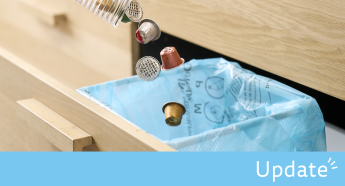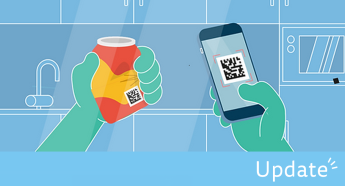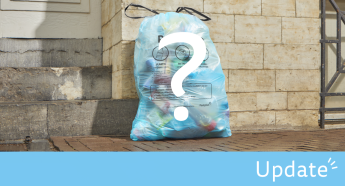Companies pull out all the stops on recyclable packaging
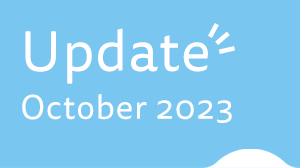
Belgian companies have committed to putting only recyclable packaging on the market by 2025. "Sustainable packaging is high on the agenda among our members. We also see this more and more in practice. Non-recyclable packaging is systematically disappearing from the market and being replaced one by one by recyclable alternatives," says Lieven Capon, Innovation Cluster Manager at Fost Plus.
Belgian producers and supermarkets took the commitment through their sector federations Fevia, Comeos and Detic. Specifically, they will only use reusable or recyclable packaging by 2025. This puts them well ahead of the European legislation that only comes into force from 2030.
Systematic approach pays off
Fost Plus obviously supports those ambitions. "By digging into our members' declarations, a few years ago we identified all non-recyclable packaging on the market and put it into different categories. We then sat down with several of our members to discuss where the main problems are. We also organise workshops and individual counselling sessions to help members get started," says Lieven Capon.
Fost Plus provides a solid financial boost to give companies a push in the right direction. "We do this through the so-called eco-modulation of the Green Dot fees that companies pay for the collection, sorting and recycling of their packaging. Packaging that is easily sorted and recyclable pays a lower Green Dot rate than packaging that is difficult to sort and recycle. For non-recyclable packaging, the rates are more than double than their recyclable alternatives."
Collecting more for recycling
We also looked at what we can do ourselves in our own sorting and recycling chain. Today, thanks to the introduction of the New Blue Bag and the construction of the new sorting centres, we are collecting more packaging than ever for recycling. It is a process that is far from over, by the way. For example, we have recently started a separate stream for opaque PET bottles from milk and other drinks.
Another example is coffee capsules, which have been allowed in the blue bag since the beginning of this year. "By providing additional eddy current separation in the sorting centres, we can sort out the capsules perfectly, together with other small aluminium packaging such as screw caps for wine and olive oil bottles or aluminium cover foil. For recycling, we work closely with specialised partners."

The new "small aluminium" stream in the sorting centre Val'Up
From multilayer to mono-material
Of course, there remain some packaging for which a recycling solution is not immediately in sight. We are thinking primarily of packaging made of several inseparable materials. This involves combining different materials - usually plastic and aluminium or plastic and cardboard - to provide extra protection for the product. Examples include beverage bags or pouches, pet food packaging, washing tablet refills and bag-in-box packaging for wine and fruit juice.
"We don't expect a good solution here anytime soon. Separating the materials is certainly not technically impossible, but it remains difficult to do so in a quality and cost-effective way until today. We therefore advise our members to look for an alternative for this packaging."
Not an obvious exercise
That quest is not always obvious. After all, the alternatives have to meet all the technical requirements in terms of food safety, shelf life and quality. "Fortunately, we see a lot of progress in this area. For packaging consisting of different materials, more and more good, mono-material alternatives are coming onto the market that are perfectly recyclable and easy to include in our flows," says Lieven Capon.
For a number of products, the alternatives are still under development. These include ground coffee, butter and smoked fish. "The last mile often weighs the hardest. These are products that require very specific packaging to guarantee shelf life and quality. But we are sure that there too we will see recyclable alternatives appear that can meet these high requirements," emphasises Lieven Capon.
In 2019, non-recyclable packaging was still estimated at 2% of the total on the market, some 20,000 tonnes. Today, that was already halved to around 10,000 tonnes.
Innovation Cluster Manager bij Fost Plus
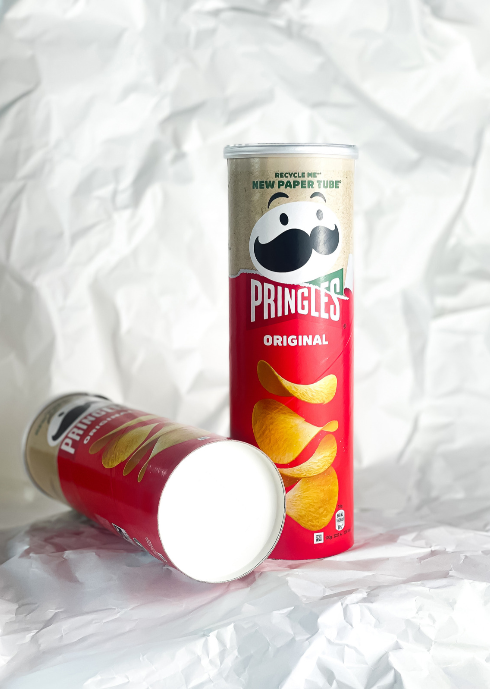
Impact on production and logistics
In addition, the introduction of new packaging also has a major impact on production processes. "We saw this, for example, with Pringles' new recyclable packaging. The factory in Mechelen, where Pringles are produced for all of Europe and even beyond, was completely redesigned, which did take several years. On the other hand, once such a large producer takes those steps, we do make significant gains in terms of recycling."
Finally, some of our members - including quite a few large retailers - have a range of thousands of private label products, with packaging made by external suppliers. They therefore take a systematic approach, going through their entire range with a fine-tooth comb and phasing out all non-recyclable packaging one by one.
That all these efforts are paying off is something we are now seeing more and more in practice. "In 2019, non-recyclable packaging was still estimated at 2% of the total on the market, some 20,000 tonnes. Today, that was already halved to around 10,000 tonnes. We also expect a number of very well-known and popular product packaging to make the switch this year. We are therefore confident that our members will be able to fulfil their commitment," concludes Lieven Capon.

